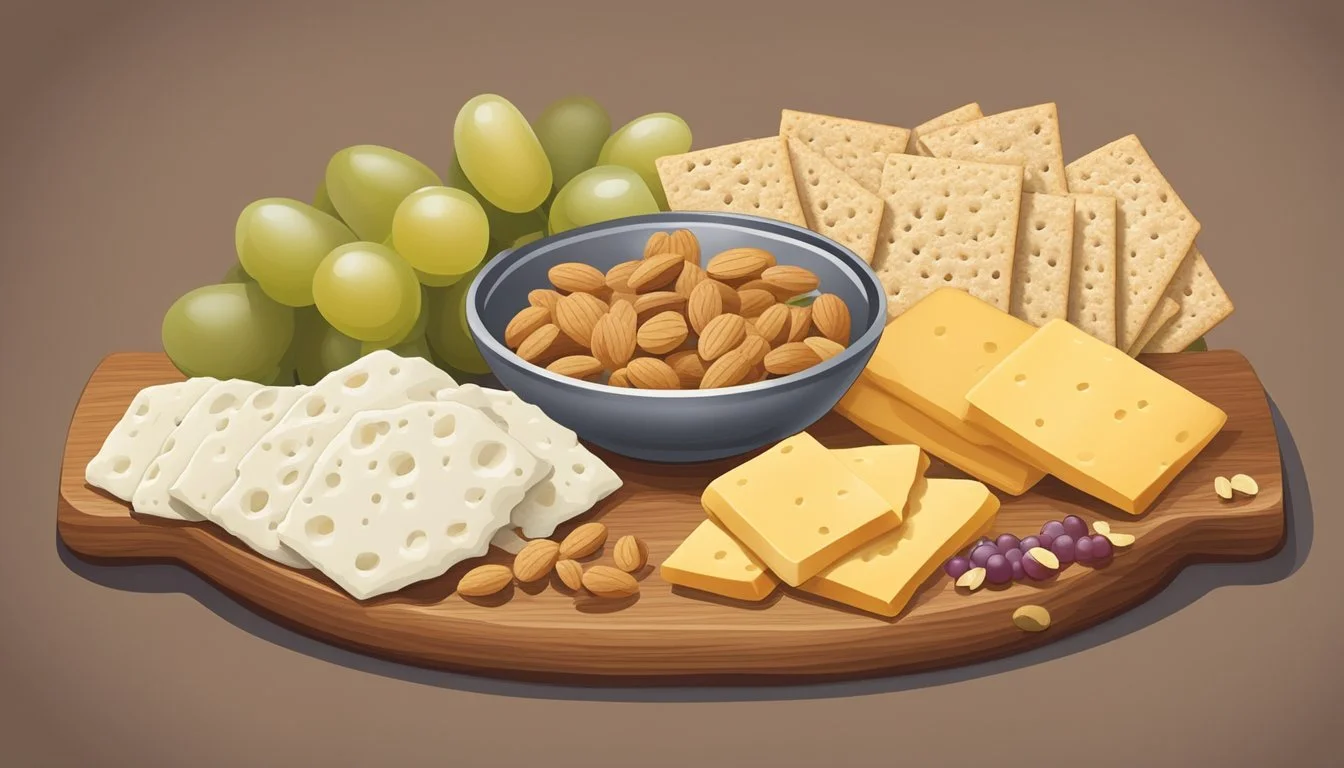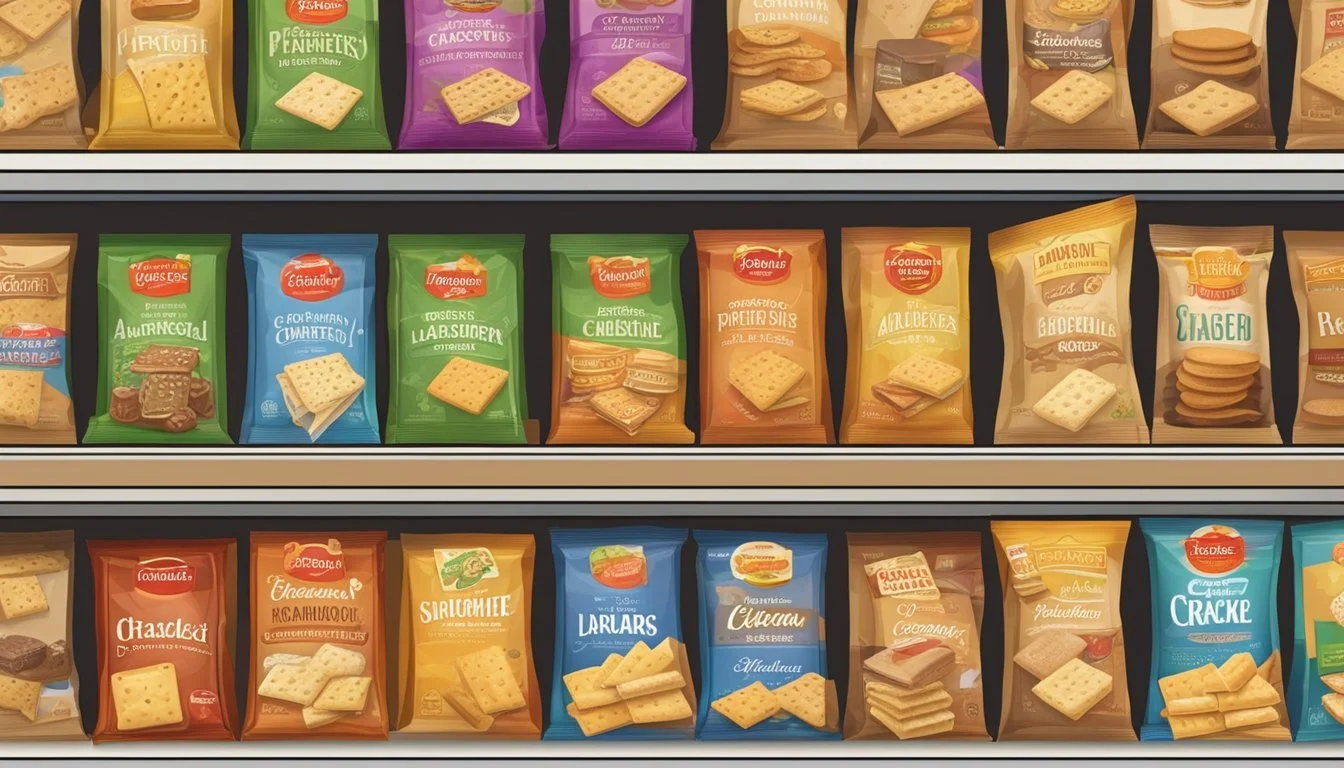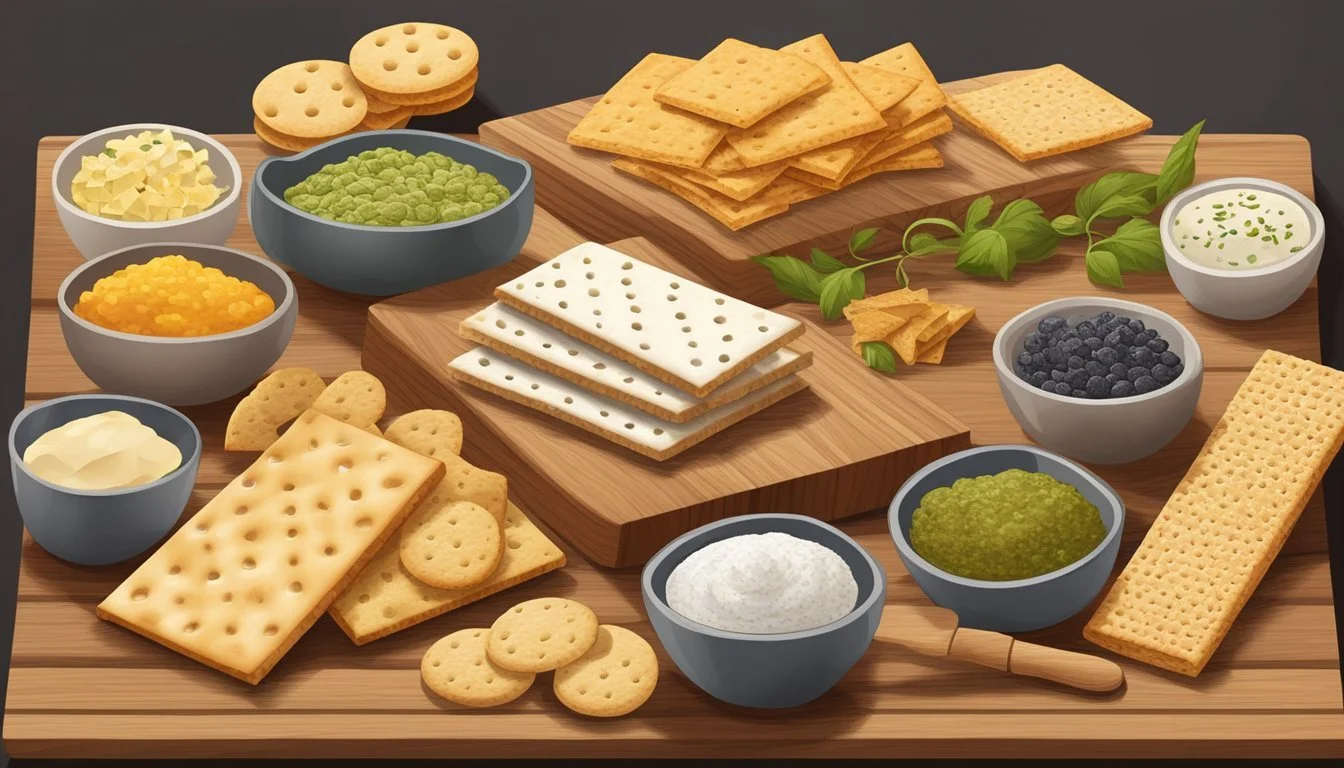Crackers Substitutes
Healthy Alternatives for Snacking
Crackers are a staple in snack drawers and party platters due to their versatility and accessibility, but they are not always the healthiest option available. High in refined carbohydrates and sodium, traditional crackers can be less than ideal for those managing dietary restrictions or seeking healthier lifestyles. Fortunately, there are numerous substitutes that offer healthier benefits without compromising on flavor or texture.
Substitutes for traditional crackers are abundant, with options ranging from whole grain varieties to vegetable-based alternatives. For instance, graham crackers, often sought after for both snacks and dessert bases, can be replaced with whole grain biscuits that offer more fiber and nutrients. Similarly, those looking for a graham cracker substitute in pie crusts can consider using nuts or oats to achieve a crunchy texture with enhanced nutritional value.
When it comes to snacking, the market provides an array of cracker substitutes that are high in protein and healthy fats. Choices like kale chips and spiced nuts not only satiate the craving for a crunchy treat but also contribute to a balanced diet. These alternatives, alongside others such as air-popped popcorn or oven-roasted veggie chips, are quickly gaining popularity as they deliver the satisfaction of a crunchy snack with fewer calories and more substantial health benefits.
Understanding Crackers and Their Role in Recipes
Crackers serve as a versatile component in the culinary world, often providing a sweet or savory foundation in various recipes. They play a key role in texture and flavor, especially in dishes that require a crunchy base.
Historical Significance of Graham Crackers
Graham crackers, named after Sylvester Graham, were originally conceived as a health food made from graham flour, a type of whole wheat flour. These sweet crackers, which typically contain honey and butter as key ingredients, are not only a snack on their own but have made their mark in baking. The historical use of graham crackers reflects Sylvester Graham's advocacy for dietary reform, highlighting their intended benefits of fiber and protein.
Nutritional Profile of Crackers
Crackers range widely in their nutritional content, primarily based on the type of flour used and the addition of ingredients like sugar, salt, and fats.
Caloric Content: They can be high or low in calories, depending on their composition.
Fiber and Protein: Whole-grain options, such as those made with wheat flour or graham flour, often contain more fiber and protein.
Sweet Crackers: Those with added sweeteners, like honey in graham crackers, will have higher sugar content.
With this understanding, one can better navigate the variety of crackers available and make informed decisions for substitutions in recipes based on nutritional needs or desired flavors.
Healthier Graham Cracker Alternatives
When seeking healthier alternatives to graham crackers, one should consider options that provide additional nutritional benefits, such as being high in fiber or lower in calories, while still offering versatility for dishes like cheesecakes and pies.
Selecting Whole Grain and Gluten-Free Options
Whole grain and gluten-free substitutes can offer similar textures and flavors to traditional graham crackers while providing better nutritional profiles. Options like almond flour or coconut flour can be used to create homemade cracker bases that are not only gluten-free but also higher in protein and fiber.
Almond Flour: A gluten-free alternative that is rich in nutrients and has a slightly nutty flavor.
Coconut Flour: Offers a lighter texture and is a good source of healthy fats and fiber.
These gluten-free alternatives are particularly suitable for those with gluten sensitivities or celiac disease and are seeking healthier snack options or pie crusts.
Low-Calorie Crackers for Diet Considerations
For individuals monitoring their calorie intake, low-calorie cracker substitutes made from oats or other grains can be a smart choice. They are not only lower in calories but also often contain less sugar while providing a satisfying crunch.
Oats: Can be ground into oat flour, offering a low-calorie, high-fiber alternative.
Rice Cakes: A crispy option that can be used whole or crumbled as a graham cracker substitute.
By incorporating these substitutes, one can still enjoy the texture and structural component that graham crackers provide in desserts such as cheesecakes and pies, without the extra calories.
Homemade Variations and Recipes
When store-bought crackers are not an option, one can create satisfying substitutes at home. These recipes bring the flavors and textures of traditional crackers using readily available ingredients, offering a delightful homemade experience.
Creating Your Own Graham Cracker Substitutes
Homemade graham crackers are simple to make and can be adjusted according to taste preferences. One can start by mixing oats, flour, baking powder, and a pinch of salt in a food processor. To achieve a richer flavor, butter and honey are added into the mix until it reaches a consistency akin to wet sand. The dough is then rolled out very thinly on a generously floured surface and cut into shapes. The pieces are arranged on a baking sheet and baked at 350 degrees Fahrenheit until crisp.
Ingredients for Homemade Graham Crackers:
Oats
Flour
Baking powder
Salt
Butter
Honey
Baking Instructions:
Preheat oven to 350°F.
Combine dry ingredients in a food processor.
Add butter and honey; pulse until mixture clumps.
Roll dough thinly and cut into desired shapes.
Place on a baking sheet and bake until golden.
Innovative Recipe Ideas
Individuals looking for versatility in snacking can consider a diverse range of graham cracker substitutes. For a nutritious variation, one might bake kale chips seasoned with olive oil and a blend of spices they enjoy. Spiced nuts can be made by tossing nuts with a combination of cumin, cinnamon, and cayenne pepper; these not only serve as a cracker substitute but also offer a protein-packed snack.
For those wanting to venture into unique dessert options, a recipe might involve switching out traditional graham crackers for alternatives like cinnamon graham crackers for a twist on s'mores, or using gingersnaps, which infuse ginger, honey, and molasses flavors into the dish, providing an intriguing texture and rich taste.
Snack Ideas:
Kale Chips: Bake kale leaves with olive oil and spices until crisp.
Spiced Nuts: Coat nuts with cumin, cinnamon, and cayenne pepper then roast.
Dessert Variations:
Cinnamon Graham Cracker S'mores: Substitute honey graham crackers with cinnamon graham crackers.
Gingersnap-Based Desserts: Replace graham crackers with gingersnaps for added spice and sweetness.
Commercial and Store-Bought Alternatives
When searching for healthier cracker alternatives in stores, consumers have a variety of options. Identifying brands that prioritize nutrition and affordability is key to making informed choices.
Identifying Healthy Brands
Healthy cracker alternatives often boast a lower calorie count and are abundant in nutrients. For consumers prioritizing heart health and weight management, options like flaxseed crackers are ideal, as they provide a rich source of omega-3 fatty acids and dietary fiber. Brands offering whole grain crackers also serve as a wise choice; these typically contain fewer artificial flavors and preservatives. To ensure a product’s health claims align with its ingredients, shoppers should carefully examine food labels for transparent information.
Budget-Friendly Cracker Substitutes
Economical yet healthy cracker substitutes are available on the market for budget-conscious buyers. Honey Maid offers chocolate (What wine goes well with chocolate?) graham crackers that can satisfy a sweet craving without excessive additives. For a balance of value and nutrition, consumers may opt for store brands or bulk purchases of these graham crackers, which not only can be a more cost-effective choice but also a versatile snack option. Keeping an eye out for sales and discounts can further enhance budget-friendliness.
When integrating cracker substitutes into a dietary routine, it is beneficial to consider both nutritional content and financial practicality.
Substitutes Based on Dessert Types
Selecting the correct graham cracker substitute can greatly enhance the texture and flavor profile of various desserts. Each substitute offers a unique twist, complementing the final dish's specific qualities.
Pie Crust and Cheesecake
For pie crusts and cheesecakes, where the structure and subtle sweetness of the base are crucial, alternatives should be chosen carefully.
Almond flour mix: To create a nutty, rich foundation for your cheesecake, combine 1 cup almond flour with 1 tablespoon honey and a dash of ground cinnamon. This mixture can be pressed into the desired dish, offering a gluten-free option with a gentle sweetness and firm texture suitable for supporting the density of cheesecake fillings.
Vanilla wafer crumbs: Vanilla wafers, toasted until golden brown, can serve as a sweet, crunchy base for both pies and cheesecakes. Their fine texture presses neatly into pans, and their inherent sweetness complements the creamy toppings without overpowering them.
Ice Cream Sundae Toppings
When it comes to ice cream sundaes, the role of toppings is to provide a contrast in texture and an additional layer of flavor.
Gingersnaps: Crumbled gingersnaps offer a spiced, deeply flavored alternative to traditional graham cracker crumbs. Their gingery taste pairs well with the creamy sweetness of ice cream, while also contributing a satisfying crunch.
Baked oats: A mixture of oats, flour, baking powder, and a binding agent like honey or butter can be processed, baked, and then crumbled to add a wholesome flavor and hearty texture to ice cream sundaes, striking a balance between healthfulness and indulgence.
Texture and Flavor Considerations
When selecting crackers substitutes, one must carefully consider both the texture and flavor profile of the alternative. The goal is to achieve a harmonious balance that complements the dish while offering a similar sensory experience to that of the original ingredient.
Choosing the Right Substitutes for Desired Texture
Crunchy Texture: For recipes requiring a crunch, oatmeal cookies or gingersnaps can serve as suitable substitutes for graham crackers. Their firm textures provide the necessary resistance that is expected in recipes such as pie crusts or cheesecake bases.
Buttery and Soft Texture: In cases where a softer, more buttery texture is desired, utilizing a mixture of oats, flour, and butter pressed into a pan can mimic the delicate crumb of graham crackers. This approach allows for the control of texture by altering the baking time.
Matching Flavor Profiles for Enhanced Taste
Cinnamon and Sweetness: Substitutes with cinnamon, such as gingersnaps, can offer a flavor profile with both the sweet and spiced notes found in graham crackers. The key is to balance the strength of cinnamon with the other flavors in the dish.
Chocolate Compatibility: When working with chocolate-centric desserts, consider the intensity of the chocolate flavor when picking a substitute. A base with a neutral flavor, like the oat and flour mixture, prevents overpowering the chocolate's richness.
Salty Flavor: If a salty component is required, one might opt for a lightly salted cracker substitute that can provide the savory balance to sweet recipes, enhancing the overall flavor complexity.
By thoughtfully selecting substitutes that align with the desired texture and flavor profile, one ensures that the alternative ingredients enrich the dish rather than detract from it.
Creative Uses and Pairings
The versatility of crackers substitutes extends across culinary landscapes, offering a wealth of possibilities for those looking to explore new textures and flavors. Whether it's creating a savory base for an entrée or playing with taste combinations, these alternatives present an array of opportunities for both cooking enthusiasts and professional chefs.
Beyond Desserts: Savory Applications
One might typically associate graham crackers with sweets, but they can easily transition into a savory context. For instance, chicken pot pie can benefit from a crust made with cracker substitutes like almond flour pressed into the pan, introducing a nutty flavor that complements the creamy chicken filling. In addition, substitutes such as veggie-based items like kale chips can provide a satisfying crunch and a nutrient-rich alternative when crushing and using them as a topping for casseroles or as a binder in meatballs.
Exciting Flavor Combinations with Substitutes
Sweet: Utilize jam as a topping on a homemade cracker substitute to add a burst of sweetness. Pair with vegan cream cheese for a balanced flavor profile.
Chocolate: Spread a thin layer of melted chocolate on a crispy cracker substitute for a divine sweet treat; a dusting of sea salt elevates the combination.
Veggies: Dip veggies into hummus spread on cracker substitutes for a healthy, crunchy snack. Add a sprinkle of herbs for more complexity.
Peanut Butter: A classic pairing, peanut butter on cracker substitutes creates a comforting and filling snack. Add some sliced banana or a drizzle of honey for extra sweetness.
By creatively pairing these ingredients, one can unlock a new dimension of culinary delights that extend well beyond the conventional uses of traditional crackers.
Different Types of Graham Cracker Substitutes
Graham crackers are commonly used in various recipes, from pie crusts to cheesecake bases. When unavailable or to add variation, several substitutes can provide similar texture and complementary flavors.
Cookies and Biscuit Variations
Gingersnaps serve as a flavorful alternative, imparting a blend of ginger, honey, and cinnamon. Their crispy nature makes them suitable for textured layers in desserts. Similarly, vanilla wafers offer a light sweetness and crunch. For a buttery flavor, shortbread cookies function well, while digestive cookies and Marie biscuits with their wholesome taste, can replace graham crackers especially in pie bases.
Utilizing Whole Grains and Seeds
Grain-based options such as pretzels can mimic the texture of graham crackers while adding a salty note to desserts. They work particularly well when crushed and used as a base for pies or bars. Animal crackers, though slightly sweeter, offer a similar consistency and can be a delightful alternative in both taste and appearance.
Fruit and Nut-Based Alternatives
For those seeking a more nutritious twist, fruit and nut-based options can be a fitting choice. Using crushed ice cream cones, which often contain nuts in their ingredients, can provide a sweet, nutty profile and a crunch comparable to graham crackers, hence their suitability in layered desserts and as a pie crust foundation.
Customizing Substitutes for Specific Diets
When looking for cracker substitutes that cater to specific dietary restrictions, it's important to select options that align with the individual's health goals and dietary needs. This tailored approach ensures a balance between flavor, texture, and nutritional content.
Gluten-Free and Vegan Substitutions
For those avoiding gluten or adhering to a vegan diet, alternatives to conventional crackers can provide both satisfaction and nutrition without compromising dietary choices. One can opt for flaxseed crackers, which are not only gluten-free but also rich in omega-3 fatty acids and fiber, contributing to heart health and effective weight management. Additionally, carrot sticks offer a crunchy, nutritious snack that pairs well with vegan dips like hummus or bean spreads.
Gluten-free, sweet substitutions can include coconut macaroons, which provide a chewy texture and natural sweetness without gluten. Coconut is a versatile ingredient that can produce various snacks suitable for those avoiding animal products and gluten.
Low-Sugar and Keto-Friendly Options
Individuals following a low-sugar or ketogenic diet require snacks that are low in carbohydrates. Cheese crackers made from baked deli cheese slices can be exceedingly low in carbs while offering a satisfying crunch and flavor. These snacks are simple to prepare and can serve as a convenient, low-carb substitute for traditional crackers.
For those on keto diets, nuts and seeds present a great alternative, supplying a satisfying crunch with minimal net carbs. High-fat, low-carb nuts like almonds and walnuts are perfect for this dietary framework. On the keto diet, moderated intake of so-called higher-carb nuts, such as cashews and pistachios, is recommended.
Top Low-Carb Nuts:
Almonds
Walnuts
Pecans
Macadamia nuts
It's crucial for consumers to keep in mind the calorie content and portion size when consuming these substitutes to maintain their dietary objectives.







